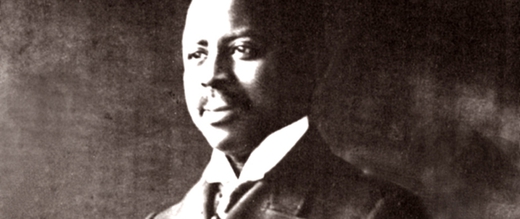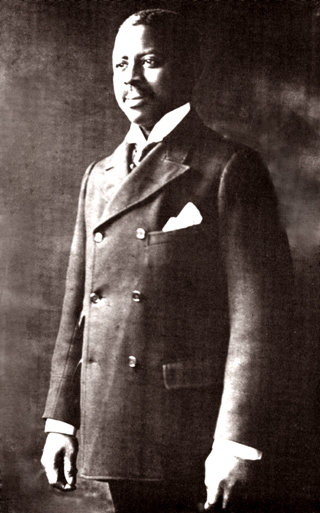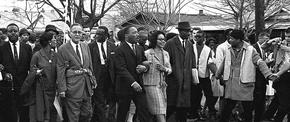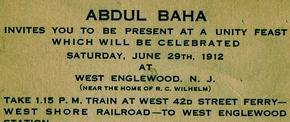The views expressed in our content reflect individual perspectives and do not represent the authoritative views of the Baha'i Faith.
Readers of this series will recall that Isfandiyar, whom Baha’u’llah freed from slavery in 1839 upon his father’s death, was Baha’u’llah’s confidant and companion. That explains why the Shah tried, in vain, to seize Isfandiyar, and to extract from him, under torture, Baha’u’llah’s secrets. We have seen how loyal and pious this extraordinary man was, which prompted this comment by Baha’u’llah: “If a believer in God prays for piety, it does not matter whether he is robed in black or white.”
Here is the comment in the original Persian. The Persian letters are followed by English letters. This is called “transliteration.” You can read the English letters out loud, and you’ll be speaking the very words that Baha’u’llah uttered, as quoted by Abdu’l-Baha:
مرد خدا شناس که تقوی طلب کند خواهی سیاه جامه و خواهی سفید باشد
mard-i khudā shinās kih taqwā ṭalab kunad, khwāhī sīyāh-jāmih va khwāhī sifīd bāshad.
– Mirza Maḥmud Zarqani, Kitab-i badayi al-athar, pp. 348–349. (My thanks to Armin Eschraghi, Ph.D., for this reference.)
As to the question of whether the Bab would have abolished slavery had he lived — the Bab would have certainly acquiesced to Baha’u’llah’s abolition of slavery in 1873, when Baha’u’llah set forth his code of laws, the Kitab-i-Aqdas. Since the Bab’s life was cut so short, however, that eventuality never happened. In a personal communication (Jan. 5, 2013), Dr. Saiedi gave this explanation:
“The reality is that the Bab and his dispensation is a transitional point between Islam and the new World Order. Consequently it is sometimes contradictory; bringing together Islamic ideas, while undermining traditional logic as well. Slavery is one of those issues. He did not abrogate it, yet the way he approached his servants was in reality some sort of abrogation. In principle, the Bab provided the metaphysics of equality, but not the sociology of it. Baha’u’llah brought the social discourse.”
I would add that the issue of slavery was at the heart of the Civil War in America, at least after the war was well underway. We know this from previously unpublished letters from Union soldiers who, when writing loved ones back home, spoke about the horrors of slavery, which the soldiers witnessed firsthand. (I refer to these letters in my recently published essay, “Abdu’l-Baha’s 1912 Howard University Speech.”)
So, abolishing slavery was not so simple as just issuing a declaration. The issue could provoke civil war, as it did in the States (and elsewhere in the world, in fact). If abolition had been prematurely legislated and enforcement attempted in Iran, civil unrest, and probably much bloodshed, would have resulted. So Baha’u’llah’s timing (1873, and earlier, in his open letter to Queen Victoria) reflected great wisdom, as the international community had watched, with profound self-interest, the course of the Civil War. America had a powerful influence abroad, even in the 19th Century. The world gradually came to understand that slavery could not go on for much longer.
The Bab, by preparing the way for Baha’u’llah, effectively prepared the way for the latter’s abolition of slavery, by divine decree, in 1873. As Dr. Saiedi points out, the very way that the Bab treated Mubarak was, in itself, revolutionary. It was the path to abolition in practice (i.e. recognizing the dignity and equality of every human being, as a necessary predicate of abolition), even if not abolition by decree.
I began this article by writing: If the “devil is in the details,” then the angel is in the patterns. After the noble servants Mubarak and Isfandiyar, the pattern of loyalty and spiritual recognition continued. The very first African American Baha’i was another servant, Robert Turner, butler of the wealthy and famous Phoebe Hearst. Sometime in 1898, Turner, who may have been born a slave, became a Baha’i.
In late 1898, Phoebe Hearst took Robert Turner, with her entourage, to the Holy Land, to meet with Abdu’l-Baha, in the very first pilgrimage of Western Baha’is. Arriving on February 16, 1899, Abdu’l-Baha warmly embraced and welcomed Robert Turner.
In response to a photograph that Turner had previously sent, Abdu’l-Baha responded:
O thou who art pure in heart, sanctified in spirit, peerless in character, beauteous in face! Thy photograph hath been received revealing thy physical frame in the utmost grace and the best appearance. Thou art dark in countenance and bright in character. Thou art like unto the pupil of the eye which is dark in colour, yet it is the fount of light and the revealer of the contingent world. – Selections From the Writings of Abdu’l-Baha, p. 114.
Robert Turner — reportedly born a slave on October 15, 1855 — recognized the Baha’i message in 1898, and became a black angel.
©2014 by Christopher Buck.



















Comments
Sign in or create an account
Continue with Facebookor